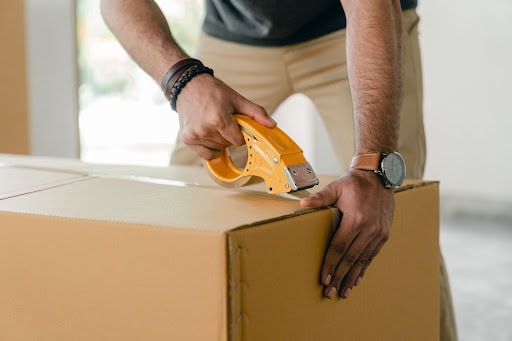In the world of moving, the right tools can make all the difference. Whether you’re a professional mover or just planning your own move, understanding and utilizing the proper moving equipment can save you time, prevent injuries, and ensure your possessions reach their new home safely. Let’s dive into some essential pieces of moving equipment that every mover should use.
1. Hand Trucks: Your Back’s Best Friend
Hand trucks, also known as dollies, are the movers’ best friend. Designed with a small platform and set of wheels at the base and a tall handle at the top, they make moving large, heavy items a breeze. Hand trucks are especially useful for moving boxes, appliances, and other cumbersome items. With a hand truck, you can stack multiple boxes together, making fewer trips and saving your back in the process.
2. Four-Wheel Dollies: Move Big with Little Effort
Think of four-wheel dollies as the more robust sibling to hand trucks. These flat platforms with wheels on each corner are excellent for moving furniture or bulky items. Simply slide the dolly under the item and roll it to its new location. No heavy lifting required! It’s an efficient and back-friendly alternative for moving hefty items.
3. Furniture Pads, Blankets, and Mattress Covers: The Triple Threat of Furniture Protection
Protecting your belongings during the move is crucial, and that’s where furniture pads, blankets, and mattress covers come in. Furniture pads and blankets can be wrapped around items to protect them from scratches or other damages during the move. Mattress covers, on the other hand, keep your mattress clean and safe from any potential moving day mess.
4. Moving Straps: Empowering Lifting, The Smart Way
Moving straps are a game-changer for those particularly heavy or awkward items. They help distribute weight evenly and allow for easier lifting and maneuvering. Using moving straps can prevent accidental drops and help avoid back strain.
5. Stair Rollers: Mastering the Art of Climbing
Stair rollers are a life-saver when it comes to navigating staircases. This specialized equipment can be attached to a hand truck to help it glide smoothly up or down stairs, reducing the risk of damage to the item or injury to the mover.
6. Packing Materials: The Unsung Heroes of Safe Transit
Packing materials, such as bubble wrap and packing paper, are essential for protecting your items during transit. These materials can be used to wrap fragile items, fill empty spaces in boxes to prevent shifting, or even cover furniture to avoid scuff marks.
7. Plastic Bags: Small But Mighty Moving Companions
Plastic bags are simple yet handy tools during a move. They are perfect for keeping smaller items together and can be used to protect items from dust and moisture.
8. Large Trash Bags: The Surprisingly Handy Moving Tool
At first glance, large trash bags may not seem like moving equipment. However, they can be incredibly useful for packing up soft items like clothing, bedding, or curtains. They can also be used for quick cleanups during the packing and unpacking process.
9. Bungee Cords: The Bind that Keeps Everything Together
Last but not least, bungee cords are invaluable moving tools. They can be used to secure items on a dolly or in a moving truck, preventing shifting and potential damage during the move.
Recap of Moving Equipment Importance
Proper moving equipment is the key to a successful, efficient, and safe move. From hand trucks and dollies to furniture pads and moving straps, these tools can simplify the moving process and safeguard your possessions. So the next time you plan a move, make sure you have these essentials on hand. Happy moving!
Related Articles
Crucial Questions To Ask When Hiring A Mover
Author
Mikhail, also known as Michael, is the owner of M&M Best Movers. He was inspired by his family’s experience in the moving business and decided to start his own company in Edmonton. With over 20 years of experience, Mikhail and his team work hard to make moving stress-free for their customers by handling their belongings with care and ensuring a smooth moving process.


